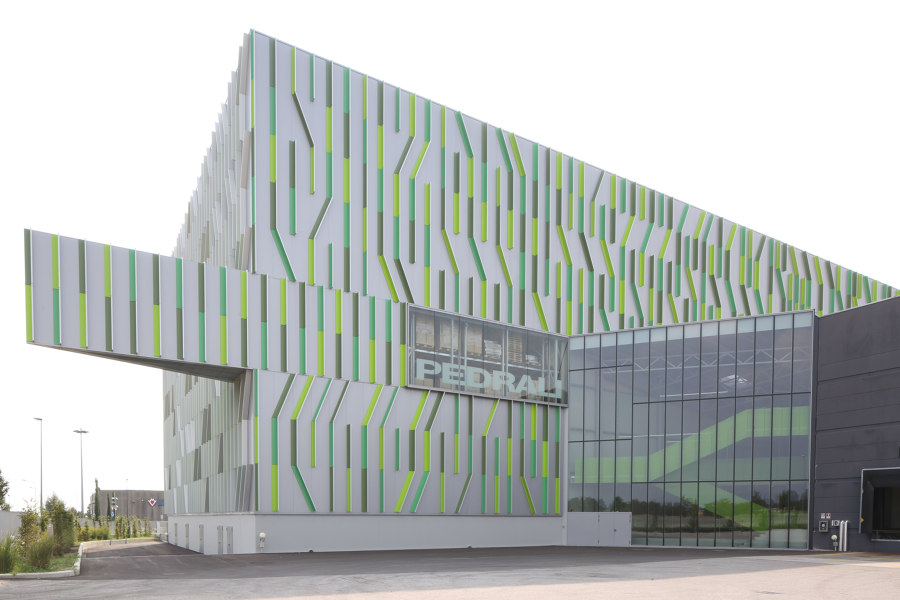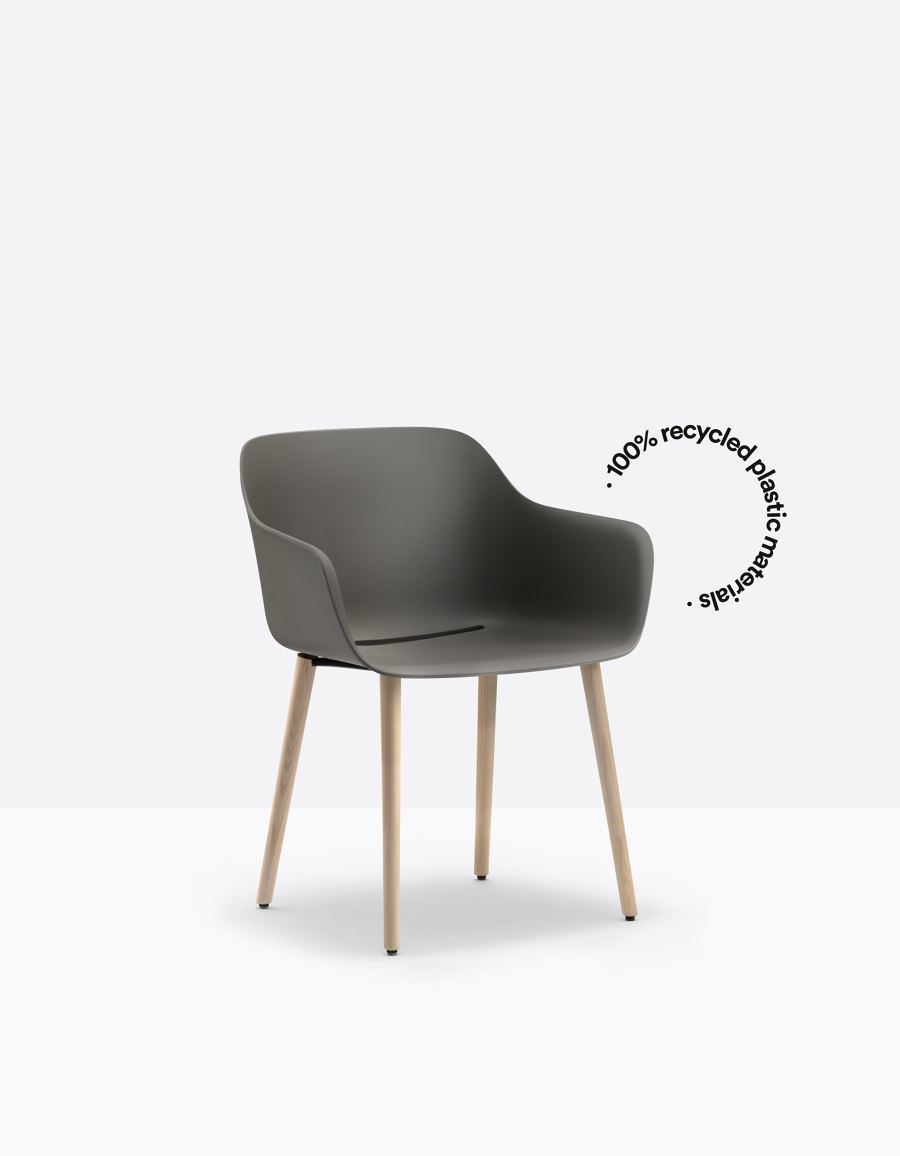'We have to make green choices an identity trait of corporate culture’: Pedrali
Brand story by Simon Keane-Cowell
MORNICO AL SERIO (BG), Italy
17.02.22
The need for sustainable design is becoming ever more urgent as we face an uncertain global future. But what does the switch to climate friendliness look like from a brand perspective? Giuseppe Pedrali, CEO of the eponymous Italian furniture specialist, tells us.
Pedrali CEO Giuseppe Pedrali: 'Increasingly, companies risk being involved in greenwashing and the only way to avoid it is to obtain concrete and certified data.' Photo: © Antonio Campanella
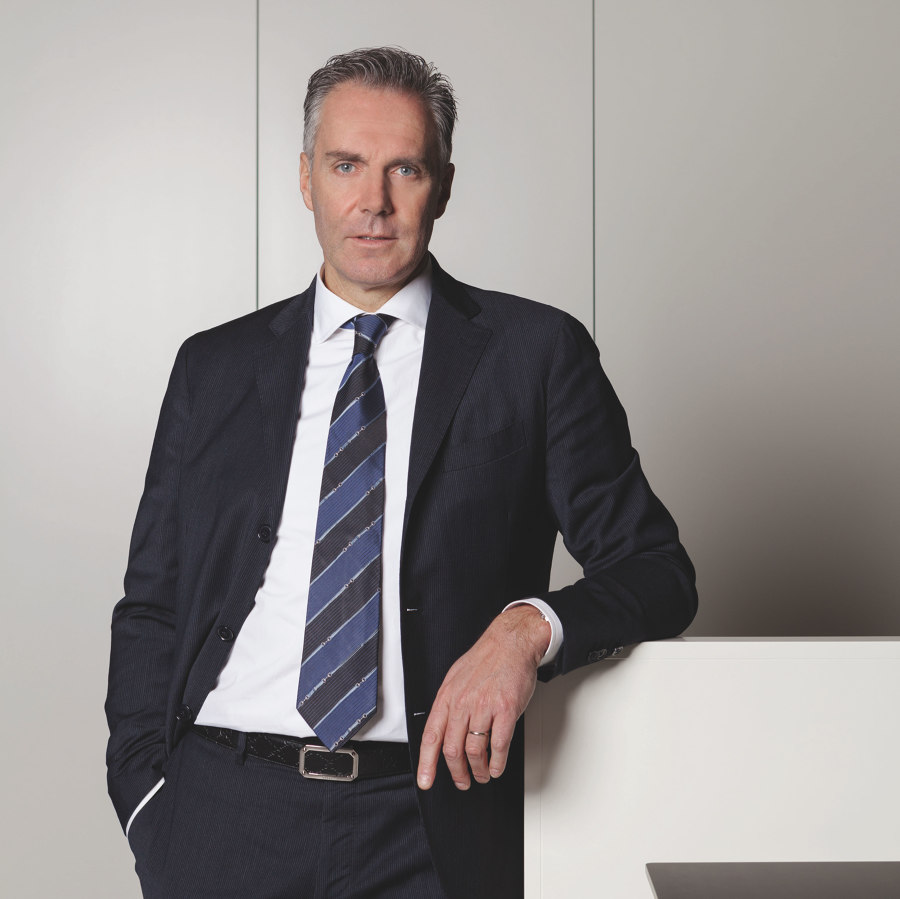
Pedrali CEO Giuseppe Pedrali: 'Increasingly, companies risk being involved in greenwashing and the only way to avoid it is to obtain concrete and certified data.' Photo: © Antonio Campanella
בYou can’t see the wood for the trees’ might be a particularly apposite expression to describe the burgeoning discourse around sustainability when it comes to the design industry.
With climate change the most pressing, existential issue of our times, furniture and lighting manufacturers are racing to convince us of their environmental credentials. What was, up until a few years ago, often mere lip-service, a retroactive marketing add-on, sustainability is increasingly being communicated via a data-driven, factual underpinning. Words become numbers. And yet…
The problem, as a producer, with marking your own homework is one of credibility. While no one wants to dissuade design brands from being more transparent, if you’re the publisher of your own metrics, your own standards, you potentially leave yourself open to the charge of greenwashing.
The answer, to a large extent, is to outsource that assessment in the form of internationally recognised certification schemes, where the standards set are, well, standard. Big-hitting Italian manufacturer Pedrali, which has long prided itself on its commitment to industrial production married with craft tradition, is no Johnny-Come-Lately in this respect. For years now, it has been optimising its operations through a tireless process of money-where-your-mouth-is environmental benchmarking. Pedrali CEO Giuseppe Pedrali explains...
Green on the inside, green on the outside: the state-of-the-art, Cino Zucchi-designed logistics facility in Bergamo signposts Pedrali's strategic, long-term commitment to environmental sustainability. Photo: © F. Romano
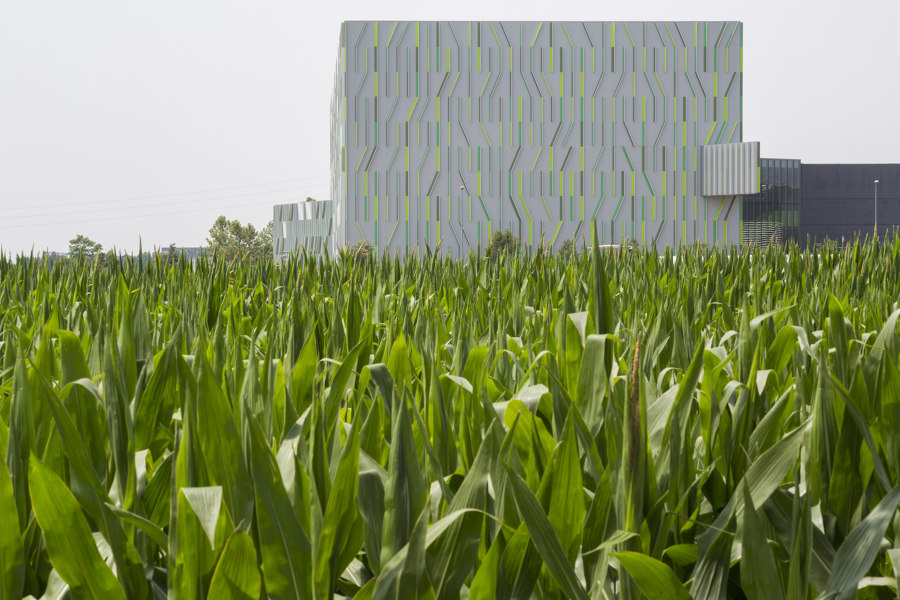
Green on the inside, green on the outside: the state-of-the-art, Cino Zucchi-designed logistics facility in Bergamo signposts Pedrali's strategic, long-term commitment to environmental sustainability. Photo: © F. Romano
×Architonic: What does this latest certification mean exactly?
Giuseppe Pedrali: The Corporate Carbon Footprint assessment measures the total greenhouse-gas (GHG) emissions, reported in tons of CO2 equivalent, directly and indirectly produced by the organisation’s business activities over a given time interval.
The assessment refers to Pedrali's production activities in 2018 and 2019 at two sites: Mornico al Serio, in the province of Bergamo, where metal, plastic and upholstered furniture is produced; and Manzano, in the province of Udine, where wooden furniture is produced. After completing the Corporate Carbon Footprint assessment, Pedrali obtained its certification according to the UNI EN ISO 14064-1:2019 standard. A new assessment for 2020 and 2021 is currently underway.
AT: What did the process to obtain it involve?
GP: In order to measure the total greenhouse-gas emissions produced, an in-depth analysis of the company’s environmental performance is first conducted, where the entire production cycle’s key emission sources are identified and quantified.
We commissioned an independent certification body, the CSQA, to validate and certify the assessment, in order to ensure the correctness and transparency of the results notified to stakeholders.
2020 saw the launch of Pedrali's first collections made of 100 per cent recycled plastic: 50 per cent of the material from post-consumer waste, the other half from industrial waste
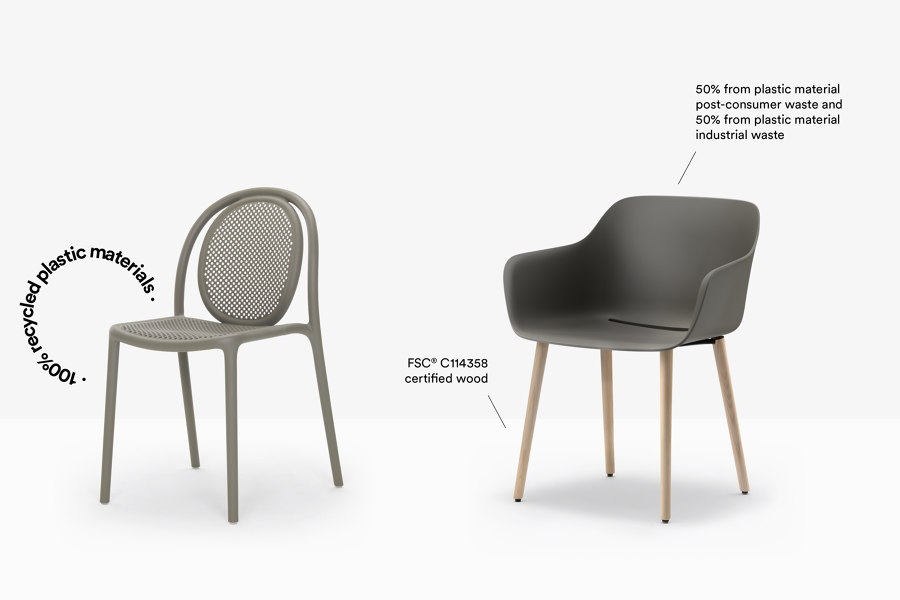
2020 saw the launch of Pedrali's first collections made of 100 per cent recycled plastic: 50 per cent of the material from post-consumer waste, the other half from industrial waste
×AT: Why was it important for Pedrali to obtain this certification? How does it fit in with your company strategy?
GP: This certification is highly valuable to us since, by analysing how much CO2 we emit, we can determine the impact of our entire production cycle on the environment. This is crucial as, with objectively measurable data, it is possible to reduce waste and increase efficiency, while promoting a green business policy based on concrete and comparable data.
Water-based paints, composed mostly of plant-based resins, have long been standard in Pedrali's production operations. Photo: © F. Romano
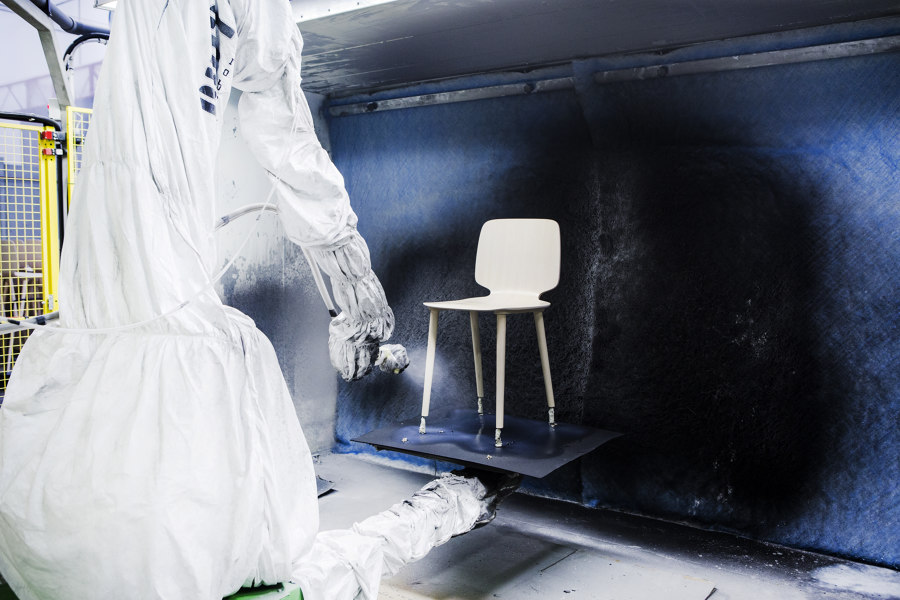
Water-based paints, composed mostly of plant-based resins, have long been standard in Pedrali's production operations. Photo: © F. Romano
×AT: And what value does this bring in real terms for architects and other specifiers?
GP: I believe that, when an architect chooses to involve in their projects products from a company that demonstrates through concrete evidence its commitment towards sustainability and the future of the planet, they prove the responsibility of their role. If every one of us contributes to this 'wellness philosophy', via our own means and actions, there are better chances to achieve the goal of environmental protection.
When an architect chooses to involve in their projects products from a company that demonstrates through concrete evidence its commitment towards sustainability... they prove the responsibility of their role
We make durable products, both from an aesthetic perspective and in terms of resistance. From the design phase, Pedrali’s furniture is conceived to be disassembled and produced through processes aimed at limiting consumption. Wood-based collections are FSC® C114358 certified, attesting to the use of wood from certified forests, and finished with water-based paints composed mostly of plant-based resins, thus drastically reducing the presence of chemical compounds compared to traditional paints.
Moreover, in 2020 we presented our first collections made from 100 per cent recycled plastic: 50 per cent from plastic material post-consumer waste and 50 per cent from plastic material industrial waste.
'Committing to a policy of social responsibility does not mean only putting 'green' choices at the core of our production and the ethics of our products, but making it an identity trait of the corporate culture,’ argues Giuseppe Pedrali
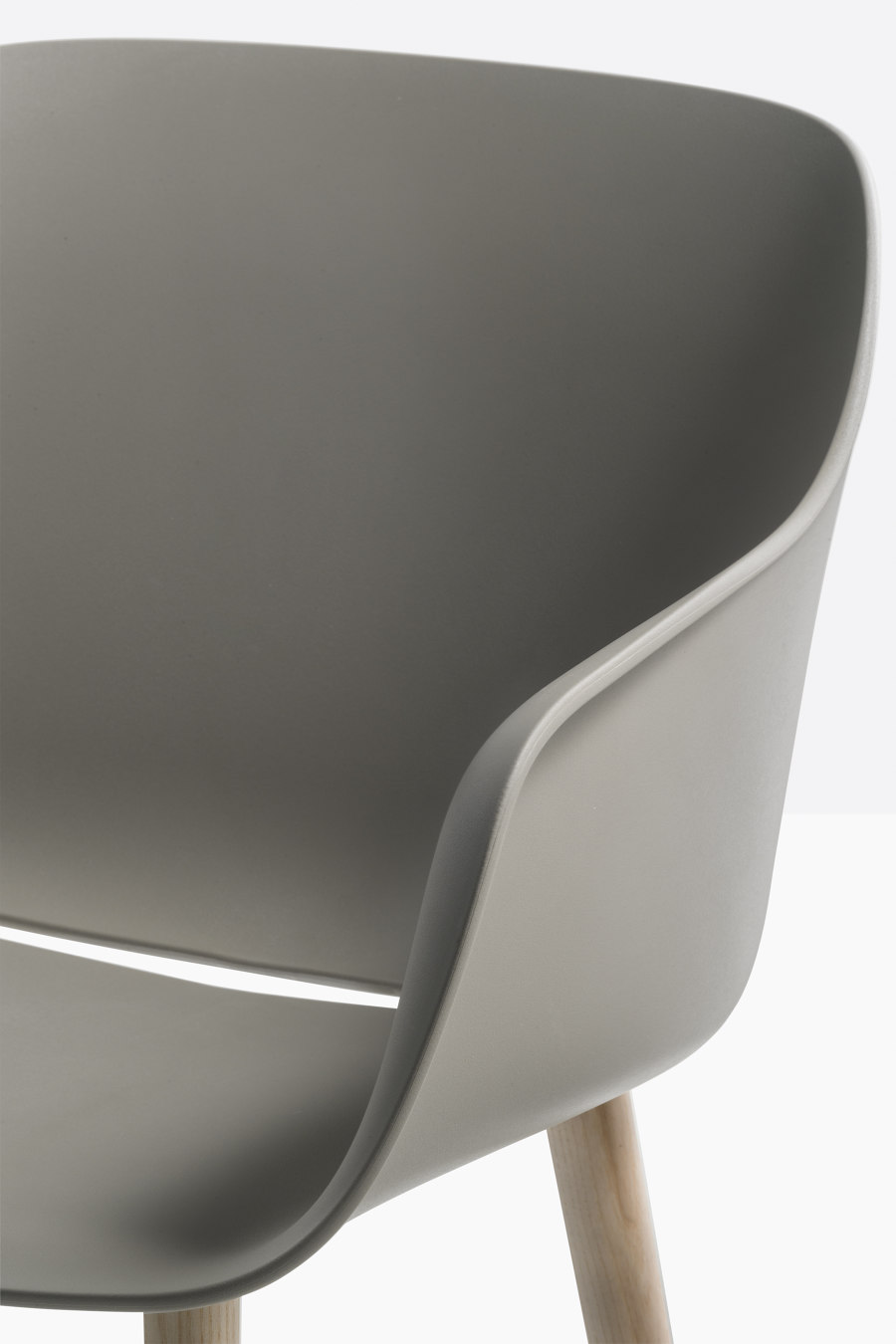
'Committing to a policy of social responsibility does not mean only putting 'green' choices at the core of our production and the ethics of our products, but making it an identity trait of the corporate culture,’ argues Giuseppe Pedrali
×AT: How does Pedrali define sustainability? Can manufacturing, with its use of energy, materials and other resources, ever be sustainable?
GP: Over the years, our company has been developing a 'green' philosophy through choices that show how respect for the environment has become an established practice. We start from knowing that, at this disruptive moment in time characterised by excessive maximisation of the environmental resources available, committing to a policy of social responsibility does not only mean putting 'green' choices at the core of our production and of the ethics of our own products, but making it an identity trait of the corporate culture, as well as a real medium-to-long-term business goal.
AT: What would your advice be to architects and other professionals who want to specify responsibly?
GP: To always gather information, to be curious and to take an active role in selecting products and information related to them. Increasingly, companies risk being involved in greenwashing and the only way to avoid it is to obtain concrete and certified data that helps in defining continuous, monitorable and therefore achievable improvement goals.
© Architonic


